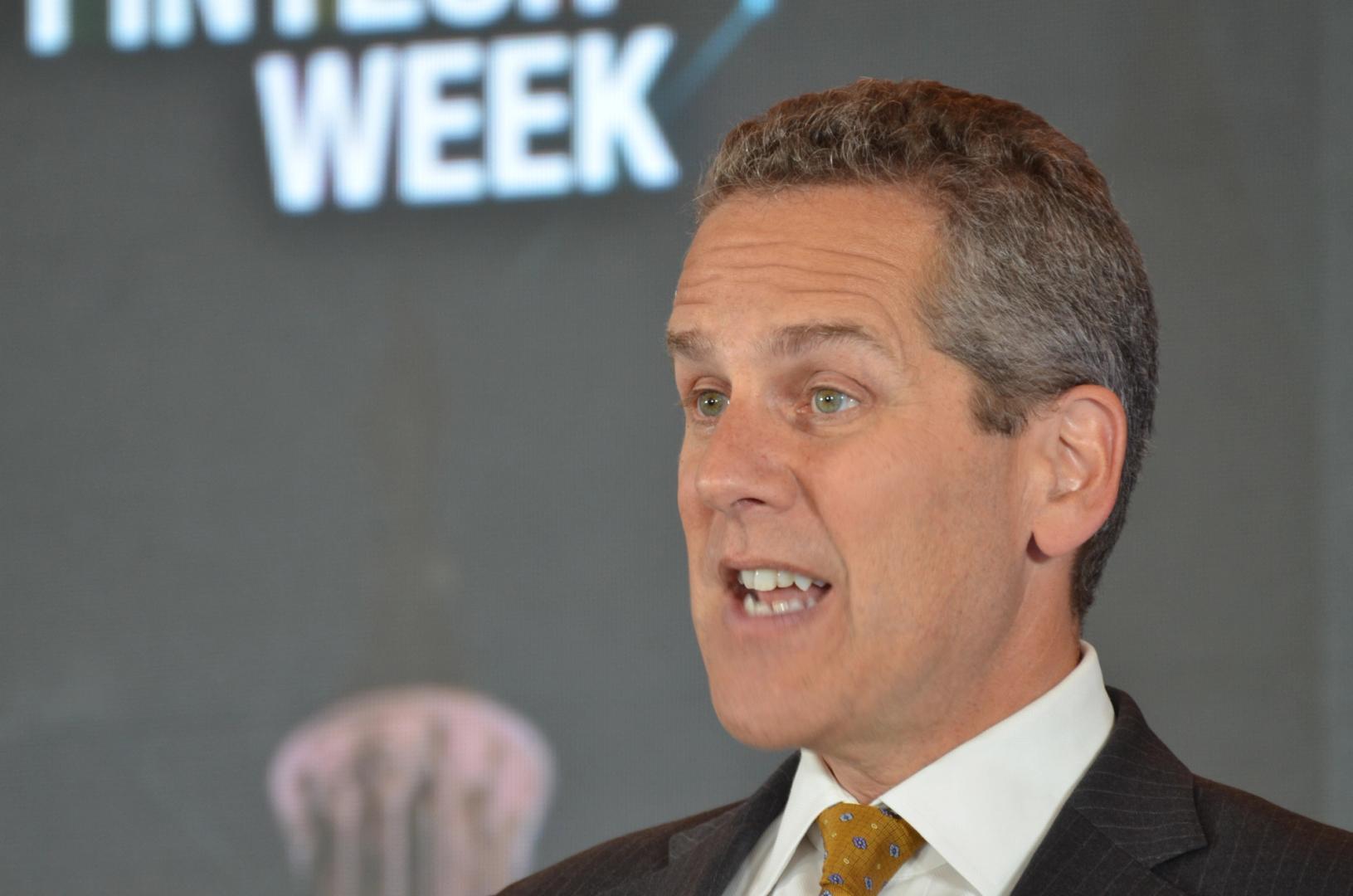
WASHINGTON, D.C. — The cryptocurrency industry, alongside major financial institutions on Wall Street, is racing to establish stablecoin infrastructure ahead of anticipated regulations from U.S. regulatory bodies. On Thursday, Federal Reserve Governor Michael Barr emphasized to legal experts in the industry the risks associated with assets that appear stable.
Barr stated, “Issuing liquid liabilities redeemable at face value backed by assets, even if they are deemed high quality, can expose private money to the risk of runs, particularly when creditors may raise concerns,” during an address at a DC Fintech Week event in Washington. He highlighted that allowable reserves, like uninsured deposits, could introduce significant risks.
Previously, Barr served as the Fed’s leading financial supervisory official and stepped down when President Donald Trump’s administration took office. The digital assets community viewed Barr as a key figure in the “debanking” movement, where industry leaders accused banking regulators of dissuading banks from engaging with crypto. Recently, the Fed and other U.S. regulators have eased the stricter crypto policies adopted during his time.
Yet, Barr continues to be part of the seven-member Fed board and warned agencies, including his own, developing stablecoin regulations about “the extensive and troubling history of private money introduced without adequate safeguards.”
He referenced the U.S. experience with money market funds, specifically how the Reserve Primary Fund “broke the buck” — losing its $1 value per share — amidst the onset of the 2008 global financial crisis, and noted how the recent COVID-19 pandemic again tested such funds.
In spite of the GENIUS Act’s passage, banking regulators have yet to implement the rules necessary for its execution, leaving the industry in a state of regulatory uncertainty. As this situation unfolds, Tether’s USDT, the leading stablecoin, operates offshore under a reserve model that likely wouldn’t meet the upcoming U.S. standard, although Tether is intent on entering U.S. markets fully.
Barr noted that traditional stablecoin issuers capitalize on the profits from investing reserve assets, creating strong incentives to maximize returns by extending the risk boundaries as much as possible. “While pushing the limits of acceptable reserve assets can enhance profits during favorable conditions, it can also undermine confidence during times of inevitable market strain,” he explained.
Corey Then, vice president and deputy general counsel for global policy at Circle, the issuer of USDC — the leading U.S.-backed stablecoin — stated, “I largely concur with his observations. There remains substantial work to be done in the rulemaking process.” He added, “At Circle, we definitely do not desire a lenient regulatory environment.”
Barr highlighted the potential inclusion of uninsured deposits as reserves for issuers under GENIUS, mentioning they were “a considerable risk factor during the banking turmoil in March 2023.” He also pointed out “overnight repo” as a reserve element that “could incorporate potentially unstable assets.”
During the 2023 crisis affecting technology-focused U.S. banks, Circle held around 8% of its reserves at the collapsing Silicon Valley Bank, which amounted to over $3 billion, triggering a rush to redeem USDC that temporarily disrupted its dollar peg. Other prominent stablecoins have also deviated from their pegs, particularly during the collapse of Terra’s UST in 2022.
Barr proposed a hypothetical scenario involving the GENIUS Act, suggesting that due to bitcoin being recognized as legal tender in El Salvador, a case could be made for bitcoin repo to be considered an eligible reserve asset.
Barr stated that federal and state regulators need to develop “a thorough set of rules that can address critical gaps and ensure that there are robust measures in place to protect stablecoin users and mitigate broader financial system risks.”
However, due to the possibility of issuers being governed by various federal and state agencies, he cautioned against the risk of regulatory arbitrage, where issuers might seek out the most lenient regulators, despite the intent behind the GENIUS Act to establish a unified framework.
In the 2008 financial crisis, America’s International Group’s high-risk financial products unit was notably monitored by a less stringent regulator — the Office of Thrift Supervision — while other operations were overseen by multiple state regulators, leading to overlooked dangers that eventually threatened the broader financial landscape. (The OTS was later discontinued.)
Read More: Tether CEO Says He’ll Comply With GENIUS to Come to U.S., Circle Says It’s Set Now
